Special Report
The State Where Population Has Grown the Most Since the Pandemic

Published:

The COVID-19 pandemic had a staggering effect on U.S. population growth. The population grew by only 0.1% in the year that ended July 1, 2021, according to the Census Bureau, the slowest growth rate in American history. The last time the population increased by less than a million was in 1937, at the depths of the Great Depression. Other than deaths from the virus, low birth rates and slowing international migration were the largest contributing factors.
Population growth was uneven nationwide. Ten states actually posted declines in population. The largest of these was the 1.6% drop in New York, which took the number of residents to 20,154,933. The state where the population has grown the most since the pandemic is Idaho, where the population grew by 2.9% to 1,900,923. (And this is the American city the most people are leaving.)
More than 30 states posted population growth over the period. To identify the state that has grown the most since the pandemic, 24/7 Wall St. reviewed one-year population change, from July 1, 2020, to July 1, 2021, using population data from the U.S. Census Bureau. Listed are the 31 states where the population has grown over that time.
Some states where the population increased during the pandemic were already growing as the result of the longtime trend of Americans moving out of Rust Belt states like Michigan and Ohio and Northeastern states like New York and heading to warmer climates (and places with lower taxes) such as Arizona, Florida and Texas. (These are the states with the highest and lowest property taxes.)
In addition, some people chose new states where COVID-19 mandates were nonexistent or less severe, such as South Dakota as well as Florida and Texas.
Click here to see the states that have grown most since the pandemic began

31. Wisconsin
> 1-year change in population: 0.1%
> Population estimate (July 1, 2020) 5,892,323
> Population estimate (July 1, 2021) 5,895,908
> Avg. new COVID cases, past 7 days 6,602.29
[in-text-ad]

30. Oregon
> 1-year change in population: 0.1%
> Population estimate (July 1, 2020) 4,241,544
> Population estimate (July 1, 2021) 4,246,155
> Avg. new COVID cases, past 7 days 6,229.43

29. Nebraska
> 1-year change in population: 0.1%
> Population estimate (July 1, 2020) 1,961,455
> Population estimate (July 1, 2021) 1,963,692
> Avg. new COVID cases, past 7 days 2,263.71

28. Virginia
> 1-year change in population: 0.1%
> Population estimate (July 1, 2020) 8,632,044
> Population estimate (July 1, 2021) 8,642,274
> Avg. new COVID cases, past 7 days 8,530.14
[in-text-ad-2]
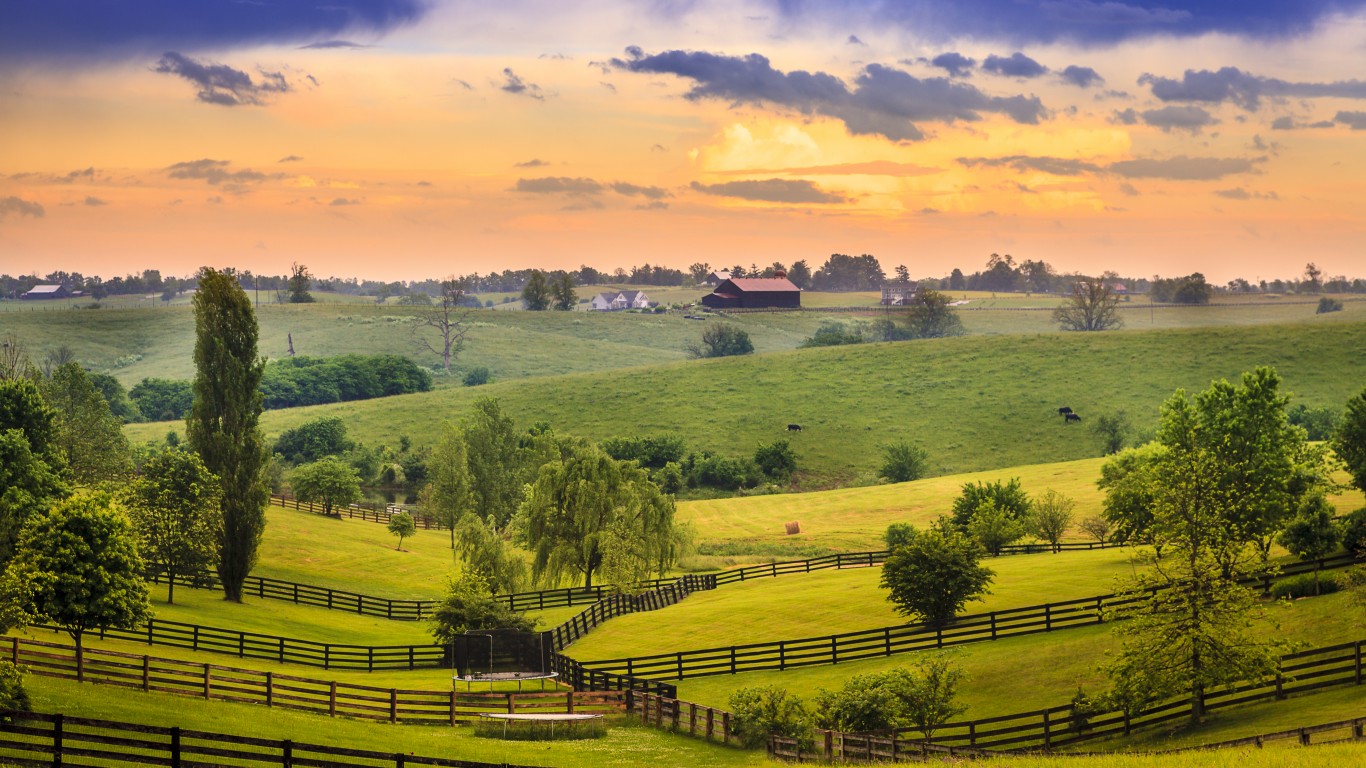
27. Kentucky
> 1-year change in population: 0.1%
> Population estimate (July 1, 2020) 4,503,958
> Population estimate (July 1, 2021) 4,509,394
> Avg. new COVID cases, past 7 days 10,786.71
26. Iowa
> 1-year change in population: 0.1%
> Population estimate (July 1, 2020) 3,188,669
> Population estimate (July 1, 2021) 3,193,079
> Avg. new COVID cases, past 7 days 3,684.14
[in-text-ad]

25. Connecticut
> 1-year change in population: 0.1%
> Population estimate (July 1, 2020) 3,600,260
> Population estimate (July 1, 2021) 3,605,597
> Avg. new COVID cases, past 7 days 2,238.43

24. Missouri
> 1-year change in population: 0.2%
> Population estimate (July 1, 2020) 6,154,481
> Population estimate (July 1, 2021) 6,168,187
> Avg. new COVID cases, past 7 days 7,755.00

23. Washington
> 1-year change in population: 0.3%
> Population estimate (July 1, 2020) 7,718,785
> Population estimate (July 1, 2021) 7,738,692
> Avg. new COVID cases, past 7 days 19,490.29
[in-text-ad-2]

22. Wyoming
> 1-year change in population: 0.3%
> Population estimate (July 1, 2020) 577,267
> Population estimate (July 1, 2021) 578,803
> Avg. new COVID cases, past 7 days 1,233.14

21. Indiana
> 1-year change in population: 0.3%
> Population estimate (July 1, 2020) 6,785,644
> Population estimate (July 1, 2021) 6,805,985
> Avg. new COVID cases, past 7 days 9,046.00
[in-text-ad]
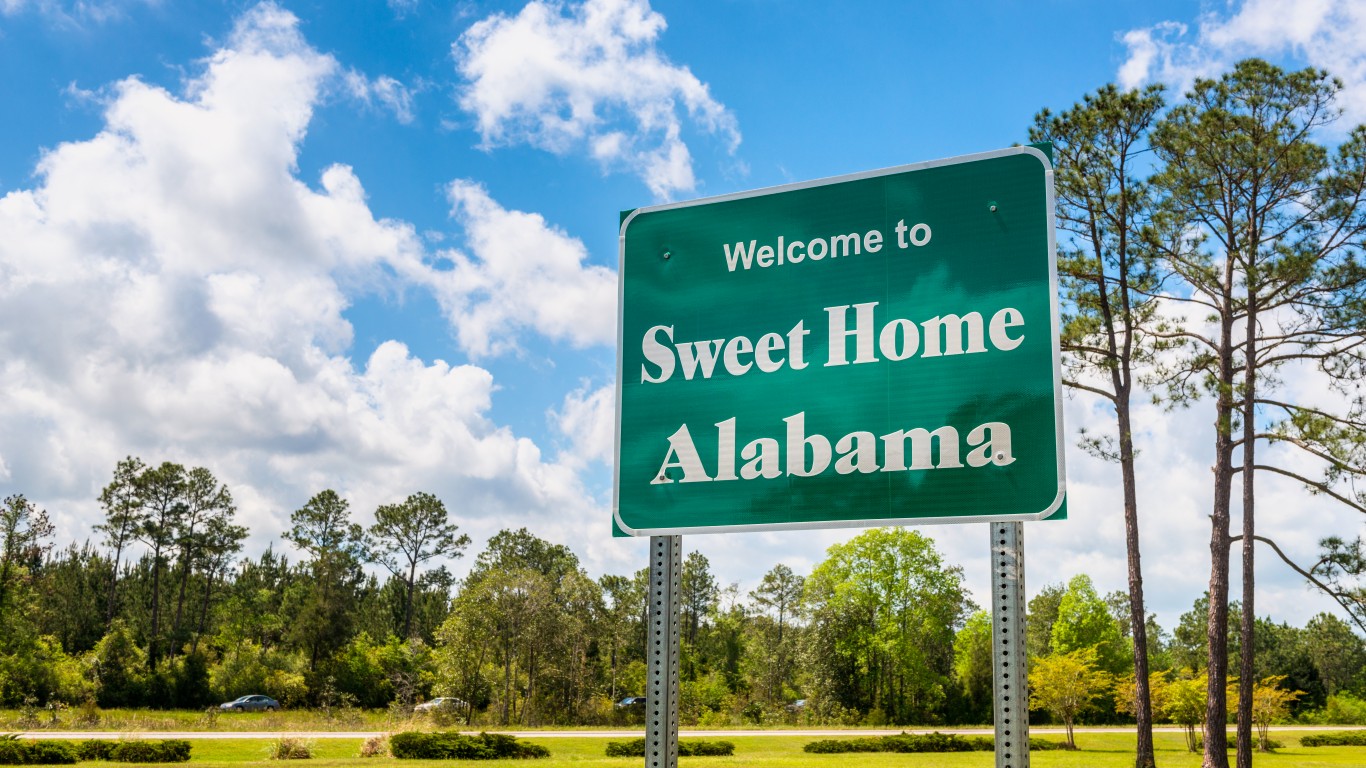
20. Alabama
> 1-year change in population: 0.3%
> Population estimate (July 1, 2020) 5,024,803
> Population estimate (July 1, 2021) 5,039,877
> Avg. new COVID cases, past 7 days 8,848.57

19. Arkansas
> 1-year change in population: 0.5%
> Population estimate (July 1, 2020) 3,012,232
> Population estimate (July 1, 2021) 3,025,891
> Avg. new COVID cases, past 7 days 4,982.57

18. Vermont
> 1-year change in population: 0.5%
> Population estimate (July 1, 2020) 642,495
> Population estimate (July 1, 2021) 645,570
> Avg. new COVID cases, past 7 days 646.57
[in-text-ad-2]

17. Colorado
> 1-year change in population: 0.5%
> Population estimate (July 1, 2020) 5,784,308
> Population estimate (July 1, 2021) 5,812,069
> Avg. new COVID cases, past 7 days 6,424.29

16. Oklahoma
> 1-year change in population: 0.6%
> Population estimate (July 1, 2020) 3,962,031
> Population estimate (July 1, 2021) 3,986,639
> Avg. new COVID cases, past 7 days 8,067.86
[in-text-ad]

15. Georgia
> 1-year change in population: 0.7%
> Population estimate (July 1, 2020) 10,725,800
> Population estimate (July 1, 2021) 10,799,566
> Avg. new COVID cases, past 7 days 13,655.86

14. Maine
> 1-year change in population: 0.7%
> Population estimate (July 1, 2020) 1,362,280
> Population estimate (July 1, 2021) 1,372,247
> Avg. new COVID cases, past 7 days 1,040.71

13. Tennessee
> 1-year change in population: 0.8%
> Population estimate (July 1, 2020) 6,920,119
> Population estimate (July 1, 2021) 6,975,218
> Avg. new COVID cases, past 7 days 13,113.57
[in-text-ad-2]

12. New Hampshire
> 1-year change in population: 0.8%
> Population estimate (July 1, 2020) 1,377,848
> Population estimate (July 1, 2021) 1,388,992
> Avg. new COVID cases, past 7 days 1,673.71

11. North Carolina
> 1-year change in population: 0.9%
> Population estimate (July 1, 2020) 10,457,177
> Population estimate (July 1, 2021) 10,551,162
> Avg. new COVID cases, past 7 days 18,802.86
[in-text-ad]

10. South Dakota
> 1-year change in population: 0.9%
> Population estimate (July 1, 2020) 887,099
> Population estimate (July 1, 2021) 895,376
> Avg. new COVID cases, past 7 days 1,124.29
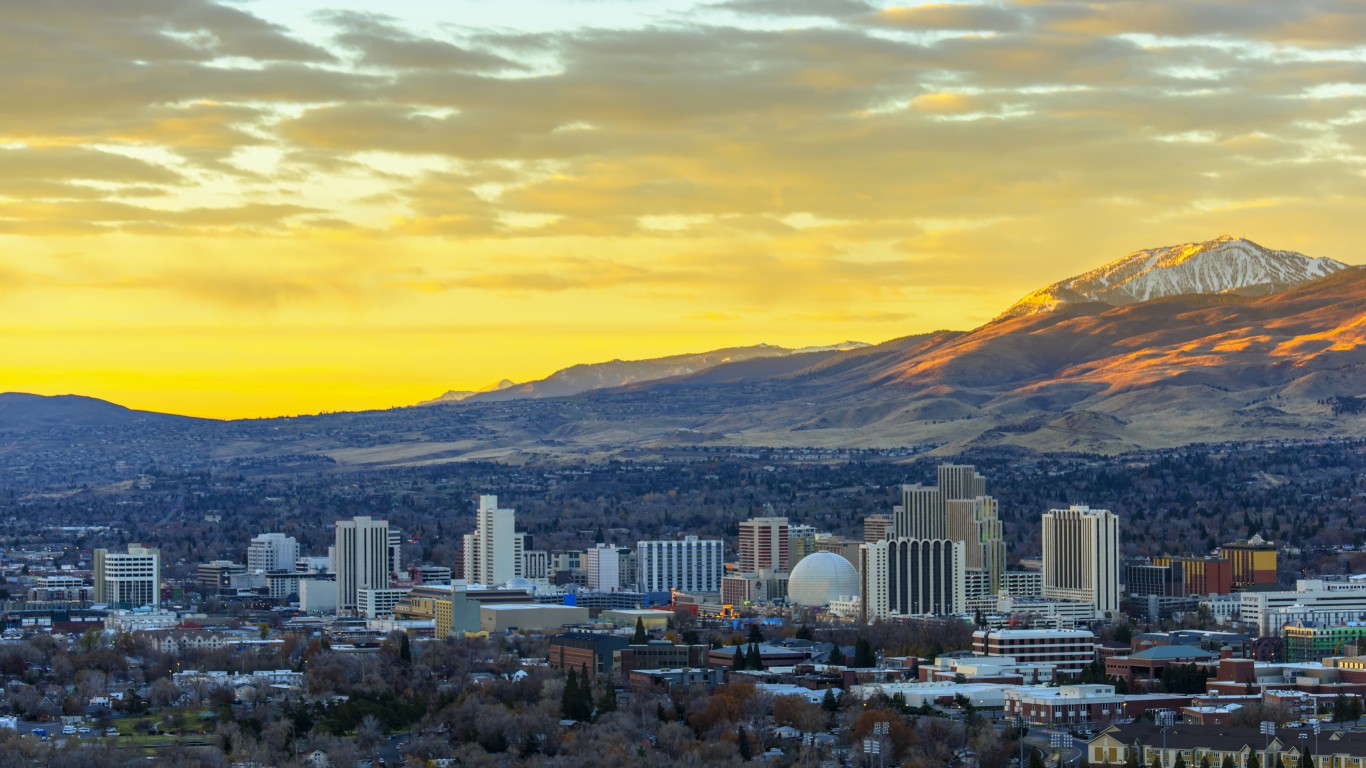
9. Nevada
> 1-year change in population: 1.0%
> Population estimate (July 1, 2020) 3,114,071
> Population estimate (July 1, 2021) 3,143,991
> Avg. new COVID cases, past 7 days 3,793.57

8. Florida
> 1-year change in population: 1.0%
> Population estimate (July 1, 2020) 21,569,932
> Population estimate (July 1, 2021) 21,781,128
> Avg. new COVID cases, past 7 days 24,682.86
[in-text-ad-2]

7. Texas
> 1-year change in population: 1.1%
> Population estimate (July 1, 2020) 29,217,653
> Population estimate (July 1, 2021) 29,527,941
> Avg. new COVID cases, past 7 days 35,168.86

6. Delaware
> 1-year change in population: 1.2%
> Population estimate (July 1, 2020) 991,886
> Population estimate (July 1, 2021) 1,003,384
> Avg. new COVID cases, past 7 days 963.43
[in-text-ad]
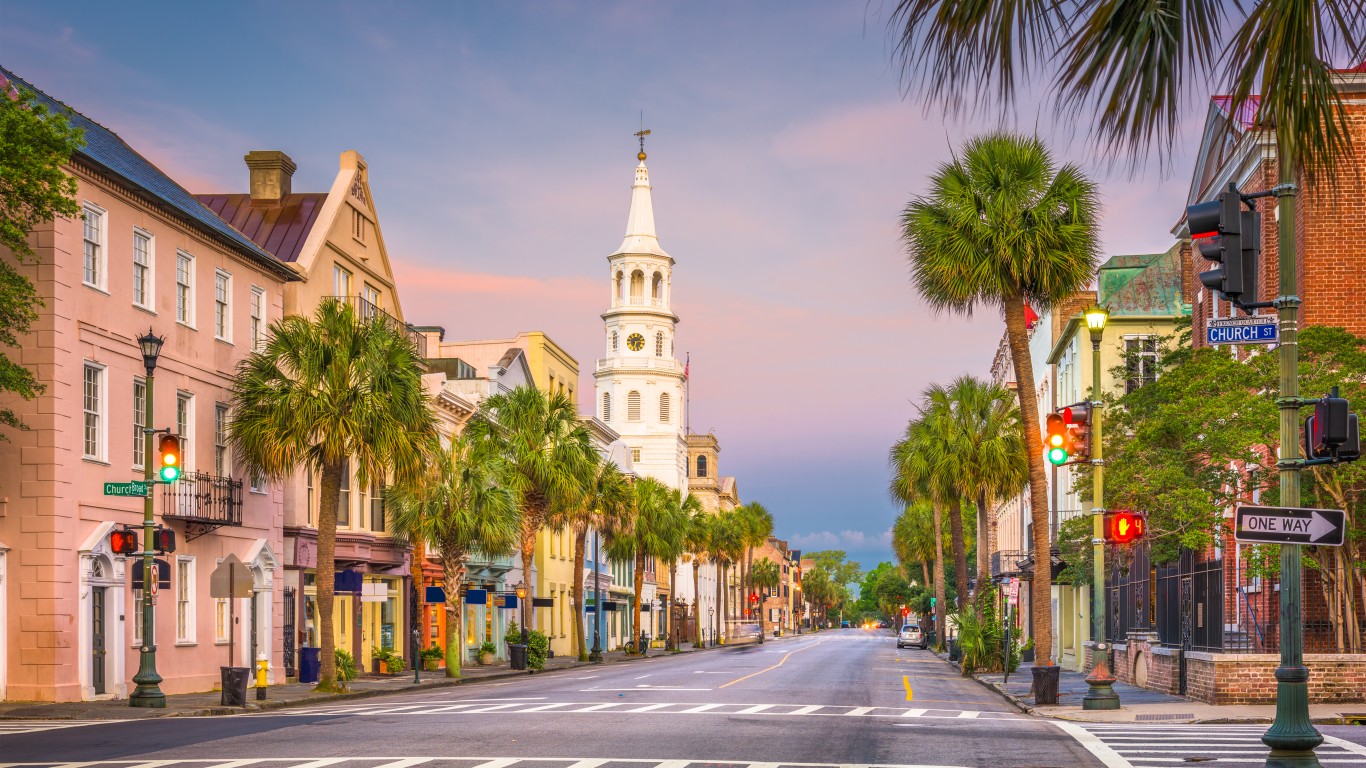
5. South Carolina
> 1-year change in population: 1.2%
> Population estimate (July 1, 2020) 5,130,729
> Population estimate (July 1, 2021) 5,190,705
> Avg. new COVID cases, past 7 days 17,455.71

4. Arizona
> 1-year change in population: 1.4%
> Population estimate (July 1, 2020) 7,177,986
> Population estimate (July 1, 2021) 7,276,316
> Avg. new COVID cases, past 7 days 14,763.14

3. Montana
> 1-year change in population: 1.7%
> Population estimate (July 1, 2020) 1,086,193
> Population estimate (July 1, 2021) 1,104,271
> Avg. new COVID cases, past 7 days 2,155.14
[in-text-ad-2]

2. Utah
> 1-year change in population: 1.7%
> Population estimate (July 1, 2020) 3,281,684
> Population estimate (July 1, 2021) 3,337,975
> Avg. new COVID cases, past 7 days 5,366.29
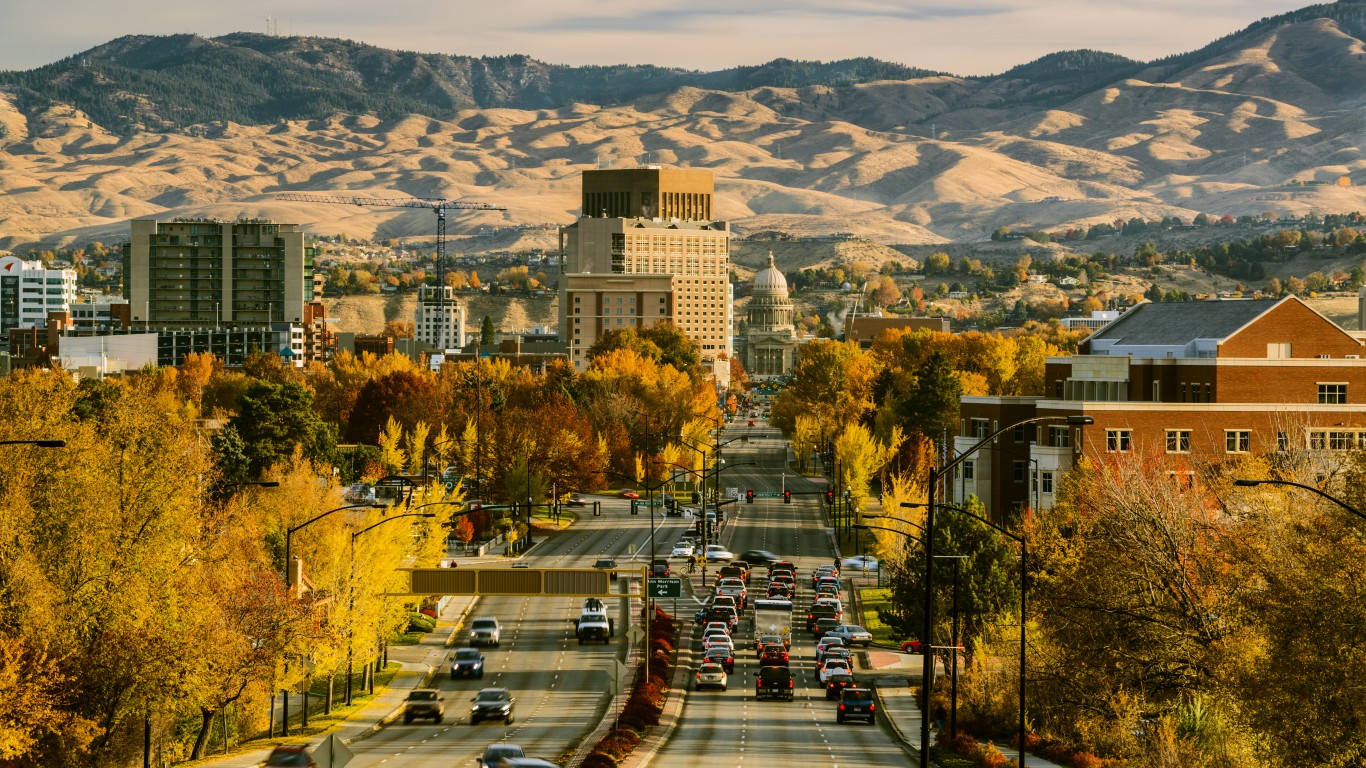
1. Idaho
> 1-year change in population: 2.9%
> Population estimate (July 1, 2020) 1,847,772
> Population estimate (July 1, 2021) 1,900,923
> Avg. new COVID cases, past 7 days 2,749.00
Thank you for reading! Have some feedback for us?
Contact the 24/7 Wall St. editorial team.